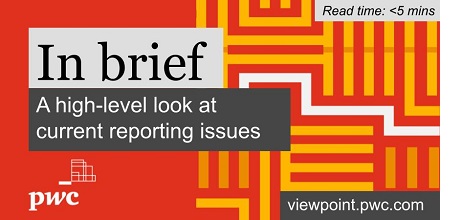What is the issue?
IFRS 13 ‘Fair value measurement’ has featured in the FRC’s Top Ten matters of challenge several times in the past. While the application of IFRS 13 is, based on the FRC’s work, generally satisfactorily applied by larger companies and its principles are well understood by certain sectors such as banking, insurance and real estate, smaller companies can struggle with the requirements.
The current market environment is also challenging for many businesses, with high inflation and rises in interest rates in many leading economies. Consumer behaviour continues to evolve in response to the cost-of-living crisis, which may, for some industries, mean significant changes in profits and cash flow forecasts. The effects of climate change may become more pronounced in forward-looking assumptions and fair values of some assets. The degree of estimation uncertainty and management judgement required in fair value measurements may also increase. All these factors may significantly impact financial position and/or performance. Consequently, clear and transparent disclosures, about the uncertainties, risks and significant assumptions underlying fair value measurements reported in the financial statements, are likely to become increasingly important.
Review scope
The FRC’s thematic review considered the requirements of IFRS 13, with a particular focus on disclosures, reflecting the fact that most of the FRC’s IFRS 13 challenges are prompted by poor disclosure. However, those aspects of measurements where errors have been found were also addressed.
The application of IFRS 13 by banks and insurers was not considered as they typically have specialised teams that perform valuations and the FRC believes the quality of their reporting in this area is usually high.
Key findings
The FRC’s report summarises the following key findings:
- Fair value measurements should use market participants’ assumptions
- Fair value measurements should use market participants’ rather than the company’s own assumptions.
- Whilst the transaction price usually reflects fair value, there may be circumstances where this is not the case, for example, in transactions with related parties. Companies should ensure that appropriate adjustments are made to fair value measurements in such cases.
- Companies should consider the need for specialist third party advice
- Where a company is required to value a material item, and where no internal expertise exists, the FRC expects companies to consider whether specialist third party input is required. Where such advice has been obtained, the FRC encourages companies to disclose that fact.
- High quality disclosures are key
- IFRS 13 disclosures should be provided for each class of assets and liabilities, determined on the basis of their nature (for example, debt vs equity investments), characteristics and risks (including climate change). When determining an appropriate level of aggregation or disaggregation, companies should consider which provides the most useful disclosures.
- Most issues have been identified in the disclosure of recurring Level 3 measurements, for which the significant unobservable inputs should be quantified and a sensitivity analysis given. However, these disclosures are sometimes omitted. Companies should ensure that the minimum disclosures required by the standard are provided.
- Companies should address the overall disclosure objective of the standard, not only the specific requirements. For example, the following additional information may be relevant to users: the nature of the item being measured at fair value and the characteristics of the item that are considered in the determination of the relevant inputs.
- Companies should avoid boilerplate and immaterial information.
- Where climate-related matters materially affect fair value measurement, the FRC expects companies to explain how the impact has been incorporated into the measurement and, if relevant, to quantify any significant estimation uncertainty. Simply stating that the risk has been incorporated into the fair value measurement is insufficient in such cases.
- Information on fair value measurements should be consistent across the annual report and accounts. Management commentary should complement and further explain fair value measurements as this will enhance users’ understanding.
What is the impact?
Key expectations for reporting going forward
The FRC expects companies to consider the examples provided in the thematic review of better disclosure and opportunities for improvement and incorporate them in their future reporting where relevant and material. In particular, the expectation is for companies to:
- Ensure that fair value measurements represent market participant, rather than company-specific, assumptions and reflect the characteristics of the relevant assets, liabilities or equity instruments subject to the fair value measurements.
- Ensure that information on fair value measurements is consistent across the ARA and reflects the significant risks facing the business, including management commentary necessary to complement and further explain fair value measurements.
- Consider obtaining specialist third party advice, when the fair valuation is likely to be material and where no internal expertise exists.
- Disclose any significant estimation uncertainty in relation to fair value measurements.
- As a minimum, provide disclosures required by the standard, including the following information for the recurring Level 3 measurements: quantitative information about significant unobservable inputs and adjustments, quantitative sensitivity for financial instruments and a reconciliation of movements in fair value. A summary table of the detailed disclosure requirements is provided in the Appendix at the end of the FRC’s report.
- Provide additional information where this is necessary to meet the overall disclosure objective of the standard, not just the specific requirements, and avoid boilerplate and immaterial information.
- Explain how management considered climate-related matters in fair value measurements where this information is material.
- Ensure that the level of aggregation of information on fair value measurements results in useful disclosures.
When does it apply?
The FRC expects entities to consider the guidance immediately, and to incorporate the guidance in their reporting and disclosures, where necessary, going forward.
Where do I get more details?
Refer to this
link for the FRC’s report.
Please reach out to your usual PwC contact if you have any queries with regard to the guidance contained within this In brief.
PwC users should
click here for contact information.













